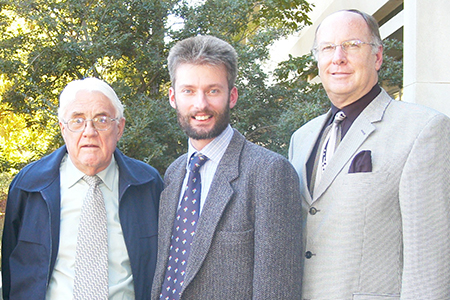19 February 2018
Photo Archive
 Prof Sampie Terblanche, Prof Philippe Burger, and Prof Tienie Crous
Prof Sampie Terblanche, Prof Philippe Burger, and Prof Tienie Crous
It is with sadness that the executive management of the University of the Free State (UFS) received the news of the recent passing of Prof Sampie Terreblanche of Stellenbosch University.
Prof Terreblanche has been advocating social and economic justice for decades. During the 1980s and 1990s, he played an important role in keeping the debate about the need for socio-economic and -political reform in South Africa going. His position was not always popular, particularly among those who had a vested interest in the apartheid regime. After the dawn of democracy, he continued to argue for socio-economic and -political reform, and especially reform that would address the very high levels of inequality in South Africa.
Through his testimony before the Truth and Reconciliation Commission, as well as his seminal book entitled A history of inequality in South Africa: 1652 to 2002, Prof Terreblanche demonstrated that even though South Africa experienced a political transition towards democracy, it still needed to undergo an economic transition. Once again, he found that his position was not always popular, particularly among those with a stake in the old, but still existing economic order. Admirably, he nevertheless persisted to argue for socio-economic change, even in the last months of his life when he was already very ill.
Prof Terreblanche’s career started in 1957 as lecturer at the then University of the Orange Free State, later becoming senior lecturer. In 1965, Prof Terreblanche moved to the University of Stellenbosch as senior lecturer, becoming professor in 1968. He retired as Professor Emeritus in 1995.
As an academic who taught generations of undergraduate students, he inspired many of them to become economists. In 2005, the UFS conferred an honorary doctorate in Economics on Prof Terreblanche in recognition of his work in Economics and his relentless advocacy for social and economic equality.